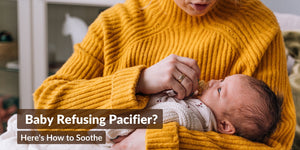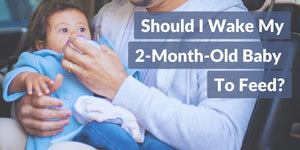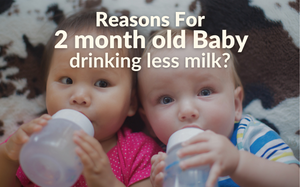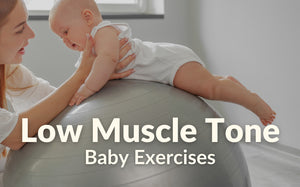Allergies are one of the most common medical conditions that affect children. An allergy is the body’s way of reacting to a substance (allergen) that it considers harmful. On exposure to an allergen, the body releases a chemical called histamine that can cause symptoms, including those in the digestive system, skin, eyes, and nose. Allergies may be caused by a host of substances like pollen, dust mites, nuts, fish and shellfish, milk, medicines, cosmetics, and even dander from pets.
The onset of an allergy could be sudden or it could be a slow worsening of symptoms that becomes noticeable after some time. You should consult the doctor if you observe symptoms of childhood allergies such as:
- Hives or skin rashes
- Coughing
- Itchy eyes, runny nose, constant nose rubbing, sniffling, snorting or sneezing
- Upset stomach
- Difficulty in breathing
You can also prepare a list of your child’s symptoms and suspected allergens for your child’s doctor.
Allergies are often inherited; if a parent suffers from allergies, there is a high chance that the child may have them too. Some types of common childhood allergies in babies are as below.
Food allergies
When children with allergies are first exposed to food or breastmilk, their bodies get sensitised to it and, on subsequent exposure, the immune system releases histamine, which causes an allergic reaction. Some of the most common food allergens include eggs, milk, wheat, soy, nuts, peanuts, and seafood. Childhood food allergies manifest as vomiting, diarrhoea, hives, eczema, cramps, swelling or itching in the mouth, lips, or tongue, difficulty in breathing, and a decrease in blood pressure. These symptoms may start within a few minutes or may take up to an hour after ingestion of the food item. The only way to prevent a food allergy is to avoid giving that food or food group to the child. If you are breastfeeding, you should avoid eating such foods as they may be passed on to the baby through breastmilk. Vitamin and mineral supplements may be required if your child cannot eat certain foods and should be started on the advice of the doctor. In the case of serious food allergies, your child may be prescribed an emergency epinephrine kit to stop severe reactions. Some kids may grow out of the allergy by the age of three or four, while some childhood food allergies last a lifetime.
Milk and soy allergies in babies may cause colic, poor growth, and blood in the stools. Your doctor may change the formula or may recommend breastfeeding in this case.
Seasonal allergies (hay fever)
Seasonal allergies or seasonal allergic rhinitis occur due to exposure to certain season-specific allergens, e.g., when pollen from plants and spores from outdoor moulds (allergens) are released and cause your child’s body to respond to these particles as if they were harmful. This leads to the classic symptoms of childhood allergies like rhinitis, which are a runny nose, mild fever, itching, and sneezing. These occur around the same time each year.
Seasonal allergies can happen at any age but are most often seen in kids around 10 years of age, with the childhood allergies settling down late into adulthood. One of the most important and sustainable ways to help your child deal with allergies is to reduce their exposure to allergens. Keep your child inside during pollen season when the pollen count is too high. Encourage your child to clean up or have a bath and change their clothes when they come home from outside. You can also give your child medicines (antihistamines and decongestants) to reduce their symptoms after consulting with your paediatrician (child specialist).
Pet allergies
Pet allergies are associated with animal saliva and pet dander, which are small flakes of skin that are shed. The saliva contains some proteins that may become airborne when the animals clean themselves with saliva and the saliva dries. A pet’s urine may also cause allergies when it attaches itself to the airborne pet dander. You may notice that the symptoms caused by pet allergies are similar to those of allergic rhinitis.
If you cannot separate your pet from your family, you can make your child’s room a pet-free zone. You should regularly clean their room and vacuum the entire house. You should improve ventilation in your home by keeping the windows open. Do not encourage your child to play with pets, and if they do, they should wash their hands immediately after. Your doctor may prescribe antihistamines to control the symptoms.
Seeing your little one suffer is not a pleasant experience for any parent, but knowing how you can help them will allow you to sleep peacefully even as your child enjoys the delights that the world offers.
References:
- Brenner Children’s. All about allergies [Internet] [Updated Oct 1, 2016]. Accessed on Nov 13, 2020.
- American College of Allergy, Asthma & Immunology. Children and allergies [Internet]. Available at: https://acaai.org/allergies/who-has-allergies/children-allergies. Accessed on Dec 9, 2020.
- Johns Hopkins Medicine. Food allergies in children [Internet]. Available at: https://www.hopkinsmedicine.org/health/conditions-and-diseases/food-allergies-in-children. Accessed on Dec 9, 2020.
- KidsHealth. Seasonal allergies (hat fever) [Internet] [Updated Oct 2016]. Available at: https://kidshealth.org/en/parents/seasonal-allergies.html#:~:text=Signs%20and%20Symptoms,itchy%20nose%20and%2For%20throat. Accessed on Nov 13, 2020.
- Children’s Hospital Los Angeles. Cat allergy tips for parents [Internet]. Available at: https://www.chla.org/blog/rn-remedies/cat-allergy-tips-parents. Accessed on Nov 13, 2020.













Your child can only get the correct allergy treatment if they are diagnosed with the right condition. However, it can be difficult to pinpoint whether they suffer from allergens when asthma and colds have similar symptoms and signs. Learn more https://www.telepeds.com/treatment/kids-allergies/